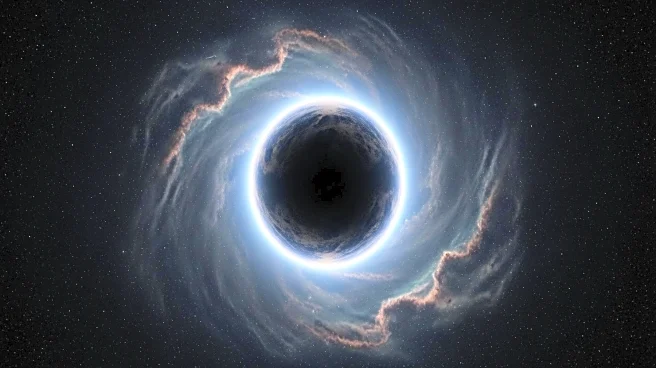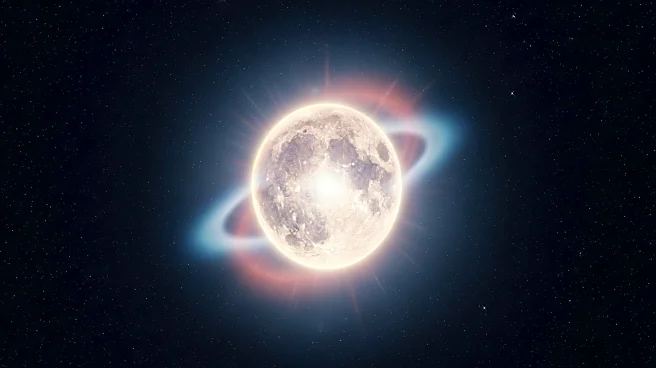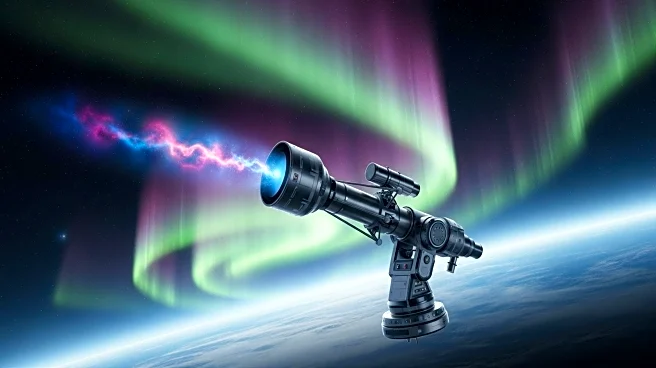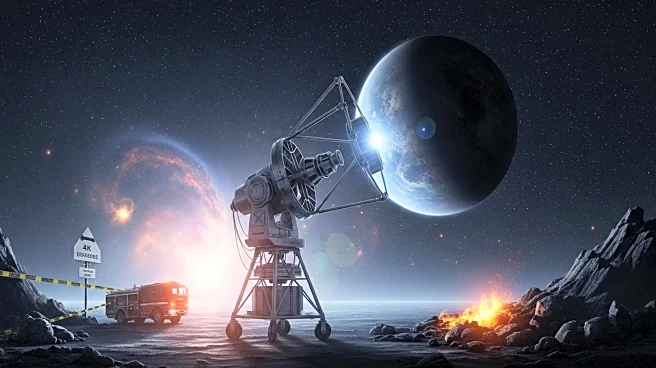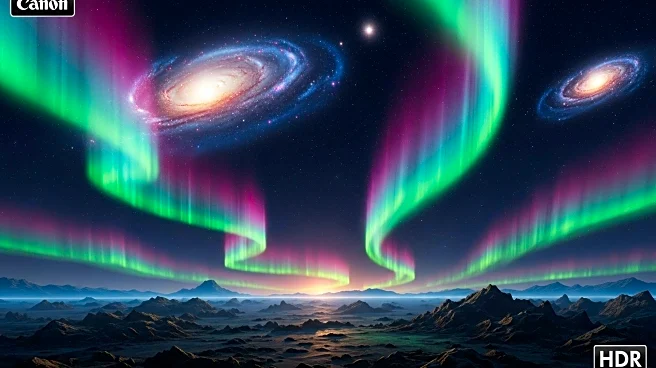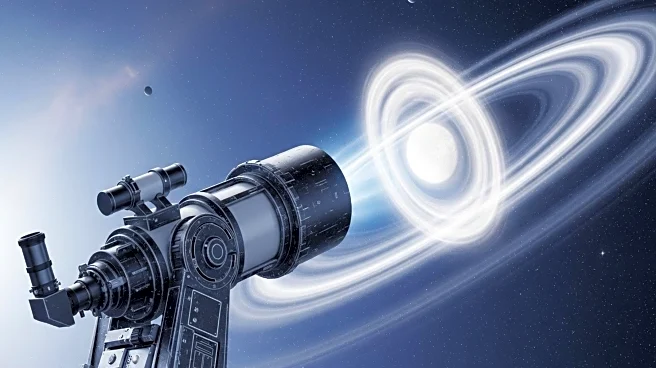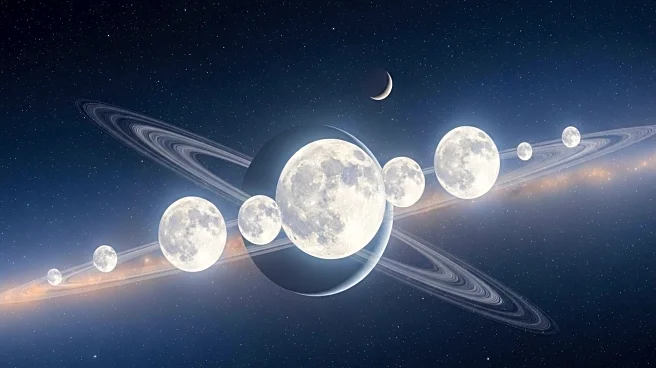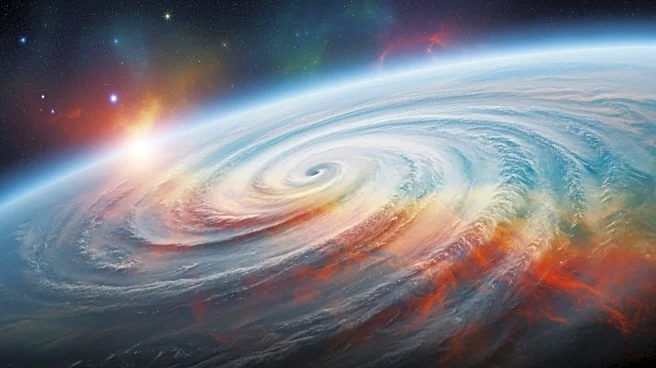What's Happening?
Astronomers have identified a rogue planet, Cha 1107-7626, experiencing an unprecedented growth spurt. Located about 620 light-years away in the constellation Chamaeleon, this planet is consuming gas and dust at a rate of six billion tons per second. This discovery was made using the European Southern Observatory's Very Large Telescope (ESO's VLT). The planet, with a mass five to ten times that of Jupiter, is still forming and is surrounded by a disk of gas and dust. The accretion rate is not steady, indicating strong magnetic fields may be funneling material towards the planet, a phenomenon previously observed only in stars.
Why It's Important?
The discovery of Cha 1107-7626's rapid growth provides valuable insights into the formation and growth of rogue planets, which do not orbit stars. This finding blurs the line between stars and planets, suggesting that rogue planets may share similar formation paths to stars. Understanding these processes can help astronomers better comprehend the early stages of planetary formation and the dynamics of free-floating planets. The study also highlights the potential for strong magnetic fields in low-mass objects, which could influence accretion events.
What's Next?
The upcoming Extremely Large Telescope (ELT) will enable astronomers to detect and study more rogue planets, helping to uncover their star-like characteristics. This could lead to a deeper understanding of the formation and evolution of planetary-mass objects. The findings may also prompt further research into the role of magnetic fields in planetary growth and the chemical changes in accretion disks.
Beyond the Headlines
The discovery challenges existing models of planetary formation and accretion, suggesting that rogue planets can exhibit star-like behaviors. This raises questions about the nature of these objects and their potential to host complex systems. The study also emphasizes the importance of advanced telescopes in revealing the hidden dynamics of the universe.

